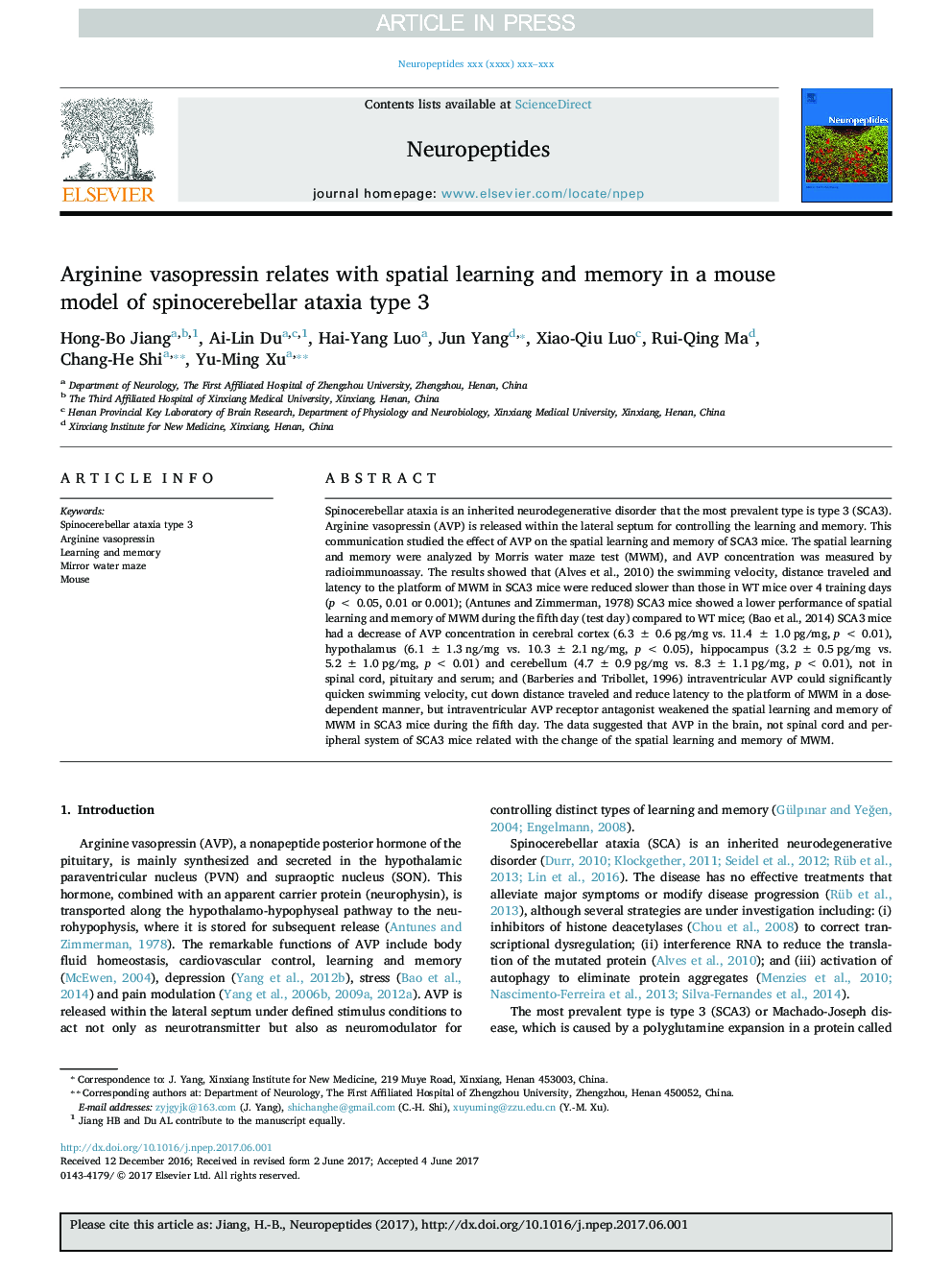| Article ID | Journal | Published Year | Pages | File Type |
|---|---|---|---|---|
| 8633453 | Neuropeptides | 2017 | 7 Pages |
Abstract
Spinocerebellar ataxia is an inherited neurodegenerative disorder that the most prevalent type is type 3 (SCA3). Arginine vasopressin (AVP) is released within the lateral septum for controlling the learning and memory. This communication studied the effect of AVP on the spatial learning and memory of SCA3 mice. The spatial learning and memory were analyzed by Morris water maze test (MWM), and AVP concentration was measured by radioimmunoassay. The results showed that (Alves et al., 2010) the swimming velocity, distance traveled and latency to the platform of MWM in SCA3 mice were reduced slower than those in WT mice over 4 training days (p < 0.05, 0.01 or 0.001); (Antunes and Zimmerman, 1978) SCA3 mice showed a lower performance of spatial learning and memory of MWM during the fifth day (test day) compared to WT mice; (Bao et al., 2014) SCA3 mice had a decrease of AVP concentration in cerebral cortex (6.3 ± 0.6 pg/mg vs. 11.4 ± 1.0 pg/mg, p < 0.01), hypothalamus (6.1 ± 1.3 ng/mg vs. 10.3 ± 2.1 ng/mg, p < 0.05), hippocampus (3.2 ± 0.5 pg/mg vs. 5.2 ± 1.0 pg/mg, p < 0.01) and cerebellum (4.7 ± 0.9 pg/mg vs. 8.3 ± 1.1 pg/mg, p < 0.01), not in spinal cord, pituitary and serum; and (Barberies and Tribollet, 1996) intraventricular AVP could significantly quicken swimming velocity, cut down distance traveled and reduce latency to the platform of MWM in a dose-dependent manner, but intraventricular AVP receptor antagonist weakened the spatial learning and memory of MWM in SCA3 mice during the fifth day. The data suggested that AVP in the brain, not spinal cord and peripheral system of SCA3 mice related with the change of the spatial learning and memory of MWM.
Related Topics
Life Sciences
Biochemistry, Genetics and Molecular Biology
Endocrinology
Authors
Hong-Bo Jiang, Ai-Lin Du, Hai-Yang Luo, Jun Yang, Xiao-Qiu Luo, Rui-Qing Ma, Chang-He Shi, Yu-Ming Xu,
